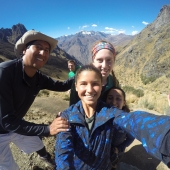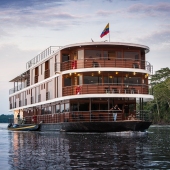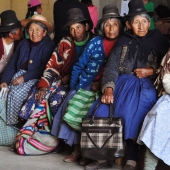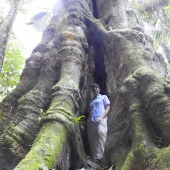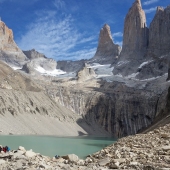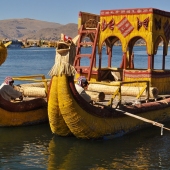
Travel to Machu Picchu: How to choose the best water bottle
Although it was announced to tour operators that starting in January 2019, single-use plastic water bottles and other plastic waste is banned from Machu Picchu, so far the new rule is not being enforced. For more information about the ban on water bottles click here.
Adios Adventure Travel supports voluntary compliance to avoid single use plastics even if it's not being enforced in Peru. We encourage you to plan ahead to carry drinking water for your visit to Machu Picchu. I'll describe benefits and limitations of different options for carrying drinking water to Machu Picchu below. This is based on my 157 years of experience traveling and trekking in Peru. Other people have different experiences and that's fine. I don't claim to know it all. I'm just sharing what I know.
I used this water filter for 40 days in Peru and did not have to buy even 1 single plastic bottle! If you follow our blog, you know I'm a stickler for good quality drinking water. At home and when I travel. So I reached out to Go Pure and negotiated a discount for our groups. Or anyone else for that matter! Here's the link to read why I love this water filter. And the discount code is there as well.
Who should limit their use of single use plastic bottles and trash during their trip to Machu Picchu?
Everyone who travels to Cusco and Machu Picchu should limit the use of single-use plastic water bottles, including hikers on the Inca Trail.
![]()
What kinds of reusable water bottles should we bring to the Inca Trail Hike and Machu Picchu?
Visitors should bring their own personal reusable water bottles to fill up as needed. The amount of water needed per day varies from person to person based on age, activities and habits. The average minimum needed is usually 1 liter per adult. You may need more than one container. Here's my recommendations about how to choose the best water bottles:
- bladder, hard shell bottle, or pouch? I prefer water pouches because they collapse for packing and come in various sizes to mix and match as needed for different activities. Hikers use bladders for the convenience of being able to sip through a tube without opening bags or backpacks. The downside is that you can't monitor the quantity, and bladders with tubes require maintenance to keep them sanitized.
- wide mouth or narrow spout? I use both. I like a narrow spout for drinking on the go. I chose a pouch with a flip-top that won't fall off or get lost. The Vapur pouch linked below is my "workhorse" for everyday drinking container when I'm on the move. The flip-top is easy to open, doesn't leak, and has been reliable for at least 2 years. I like the wide mouth cantene as a storage container for resupplying my pouch. I travel with several sizes of wide-mouth nalgene cantenes. (see links below)
- energy powders. My main drinking pouch is for water only. I reserve specific bottles for use with powders/supplements because of the maintenance.
Where can we fill our reuseable water bottles in Peru?
- Purify tap water. The best water filter for travelers is cheap, easy to use and can be shared. Here's a link to read more and get a discount if you buy.
- bottled water is easy to buy anywhere in Peru. Even shops in small villages offer cheap bottled water for sale. The idea is to buy large liter size bottles and pour into your reusable bottle. I'm not really sure if that reduces the amount of plastic waste or not!
- Hikers on any multi-day trek with camping and porters should start out on Day 1 with a full day's supply of water. Porters will purify water thereafter for resupply as needed.
- Hikers on day hikes including the 1 Day Inca Trail need to provide containers and water for the full day.
Can we buy reusable water bottles in Cusco?
- Ordinary plastic bottles can be purchased in Cusco. It's still possible to buy drinking water in disposable plastic bottles and reuse them while traveling, then discard.
- At this time, the movement to avoid single use disposable water bottles is not prevalent. But it's only a matter of time until vendors in Peru will be offering an array of reusable bottles, and hopefully reuseable pouches.
How to choose the best water bottle. What I look for:
- BPA-free material, sturdy enough to stand up to long-term use
- Soft side material that allows bottle to collapse and fold when empty
- Leak-proof (is it asking too much that a container designed to hold liquids should not leak?)
- Carabiner for attaching the container to bags or backpacks (pouches often come with a tiny carabiner that fits in a hole punched in the edge of the bottle. This setup is not designed to withstand the weight of a full container. And the hole may tear out. It only works for carrying your empty bottle)
- Flip-cap spout for easy opening/closing and won't get lost. For drinking directly from the bottle
- Standard wide-mouth screw top lid that attaches to the bottle (so it doesn't get lost)
- Collapsible containers in various sizes for mixing and matching as needed for different activities
- Container that is able to stand up on it's own when filled with water
Useful Links on amazon: (to see examples of the items I've used and might be useful for travel)
- Nalgene Cantene (in various sizes) note: people complain that the lids can leak. I had one that did and rather than return it I switched lids with a standard camelbak bottle I had laying around. It works like a charm! I love the cantene so much I'm willing to do this to make it work.
- Vapur Foldable Water Bottle with flip cap
(after 3 years of nearly daily use, my bottle finally sprung a small hole and I had to lay it to rest. I plan to buy another one) - Katadyn BeFree Water Filtration system (collapsible bottle and filter)
(filters as you drink. Best for personal use only)
What do I use for filtering my drinking water when traveling?
I absolutely love my Camelbak UV Light filter and I used it for years. But it's not available any longer. Which works out fine, because I recently learned that while UV kills viruses and bacteria, it doesn't really do anything about heavy metals, chlorine and the dreaded fluoride. After a great deal of research, I found the perfect water filter for travelers and even for use at home. This little pod is great. It's small, easy to use and inexpensive. Apparently it's the only portable filter that removes fluoride. We have a discount code on our website.



